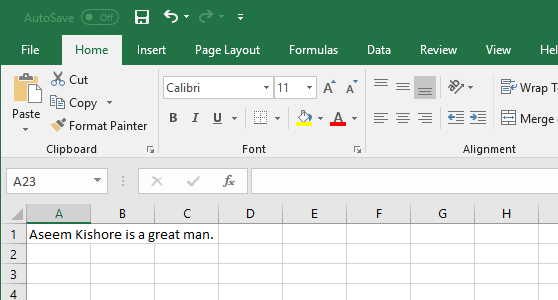Change Default Format For Excel Mac

This post will guide you how to retain the text format always match destination formatting while copy/paste content in Excel. Is there a way to set default to always match destination formatting when pasting into Excel.
When you copy data from a word document or other external application, Excel will use the original formatting for pasted content by default. And you have to manually change it to “Match Destination Formatting”. If there is a way to always default to “Match Destination Formatting” or if it can be done with a VBA macro so that each time I hit “ctrl +V” keys to always default “Match Destination Formatting”.
Wdbluz0010bsl western digital my passport for mac. How to set Excel as the default program on Mac. You find CSV, once you have found the CSV file format on the left-hand side of your screen,. Changing format on axis in Excel/Office2016 for Mac How can you change format to percent in the axis of xy-graph in Excel/Office2016 for Mac? It is a basic standard option yet I cannot find it.
Always Match Destination Formatting with Paste and Match Destination Formatting command
You can add “Paste and Match Destination Formatting” command to Quick Access Toolbar, when you copy and paste data to your worksheet, just easily click Match Destination Formatting button on the Quick Access Toolbar. Do the following steps:
Step1: right click on the Quick Access Toolbar (the area in the top left with the Save, Undo and Redo buttons)
Step2: click “Customize Quick Access Toolbar…” and the Excel Options dialog will open.
Step3: in the “Choose commands from:” dropdown menu, select “All Commands“.
Step4: choose Paste and Match Destination Formatting command and click Add>> button to add this command to the Customize Quick Access Toolbar.
Step5: click Ok button, and the Paste and Match Destination Formatting button should be added to the Quick Access toolbar.
Always Match Destination Formatting with VBA Macro
You can also use a VBA Macro to always default match destination formatting when you press Ctrl + V keys on your keyboard. Just do the following steps:
Step1: open your excel workbook and then click on “Visual Basic” command under DEVELOPER Tab, or just press “ALT+F11” shortcut.
Step2: then the “Visual Basic Editor” window will appear.
Step3: click “Insert” ->”Module” to create a new module.
Step4: paste the below VBA code into the code window. Then clicking “Save” button.
Step5: back to the current worksheet, click Macros button under Code group. Or press ALT+F8 to open the Macro dialog box
Step6: select the “PasteAsValue” macro and click the “Options” button in the Macro dialog box. And the Macro Options dialog will open.
Step6: in the Macro Options dialog box, type “v” in the box, and click Ok button.
Step7: click the Cancel button to exit the Macro dialog box.
Step8: save the Excel spreadsheet (Excel will throw a warning if the spreadsheet is not already an .xlsm “Macro-enabled spreadsheet” – click “No” to have Excel prompt for a different file name and file type to save as)
Now when you paste data with ctrl + V keys, the pasted data will be pasted using match destination formatting by default.
You might also like:
When Jerry enters a date in his worksheet he prefers the format dd/mm/yyyy which does not appear as a standard format in the Format Cells dialog box. He can create a custom format for the date, but he must do that every time he enters a date in a new workbook. Jerry wonders if there is some way to make his desired date format the standard.
There are a couple of things you can do to approach this issue. First, you can take a look at how you are formatting your dates. Instead of using a custom format, you can simply change the format locale used for your dates by Excel. Follow these steps to do your formatting:
- Select the cell (or cells) you want to format.
- Display the Home tab of the ribbon.
- Click the small icon at the bottom-right corner of the Number group. Excel displays the Number tab of the Format Cells dialog box.
- Click Date at the left side of the dialog box. (See Figure 1.)
- Using the Locale drop-down list, choose a country or region that uses the date format you want to use. In the case of Jerry's need, picking English (United Kingdom) is a good choice. Excel modifies the date formats available to you.
- Select the desired date format.
- Click on OK.
Figure 1. The Number tab of the Format Cells dialog box.
Another approach is to simply change the regional settings in Windows itself. You do this using the Control Panel options (look for Regional Settings in your Control Panel) and changing them to a country that uses the format you want. Excel bases its default date formatting options on which region you specify.
Finally, if you prefer you can create a cell formatting style that uses a data format of dd/mm/yyyy. If you create the style in a blank workbook, you can then save the workbook as a template and then use it to create new workbooks in the future. Since the new workbooks are based on the template, the cell formatting style would be available to apply to any cells in the workbook.